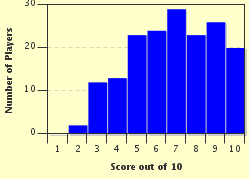Quiz Answer Key and Fun Facts
1. In the air that we breathe we actually need a gas called oxygen. What percentage of the atmospheric air is oxygen?
2. The brain tells the lungs to expand, which sucks air in through the nose or mouth, then down into the lungs. Why is it better that that air reaching the lungs (inspiration) is better when it travels through the nose?
3. The air works its way to the very end of the lungs to sacs called alveoli. Alveoli are connected to a blood vessel from the heart called the pulmonary artery. What happens next?
4. When the oxygen reaches the heart, the heart needs to pump it to the rest of the body. Which of the four chambers of the heart acts like a whole body pump?
5. The blood containing the oxygen then travels through large vessels called arteries which get smaller until they become very narrow vessels called capillaries. The blood then returns to the heart through the veins. In which vessels does the oxygen leave the bloodstream?
6. Now that the oxygen has left the bloodstream, its function is to help convert food into energy. Where does this chemical reaction take place?
7. When the oxygen is released from the blood, it now picks up a different gas. This is called carbon dioxide and the body must eliminate it. What is its chemical formula?
8. Deoxygenated blood (blood without oxygen) then returns to the heart carrying carbon dioxide through the veins until it enters the heart. Into which chamber of the heart does this type of blood flow?
9. The heart then pumps the blood containing the carbon dioxide to the lungs. What happens here?
10. When we breathe out, the carbon dioxide moves from our body into the atmosphere. What happens to the carbon dioxide now?
Source: Author
1nn1
This quiz was reviewed by FunTrivia editor
NatalieW before going online.
Any errors found in FunTrivia content are routinely corrected through our feedback system.


